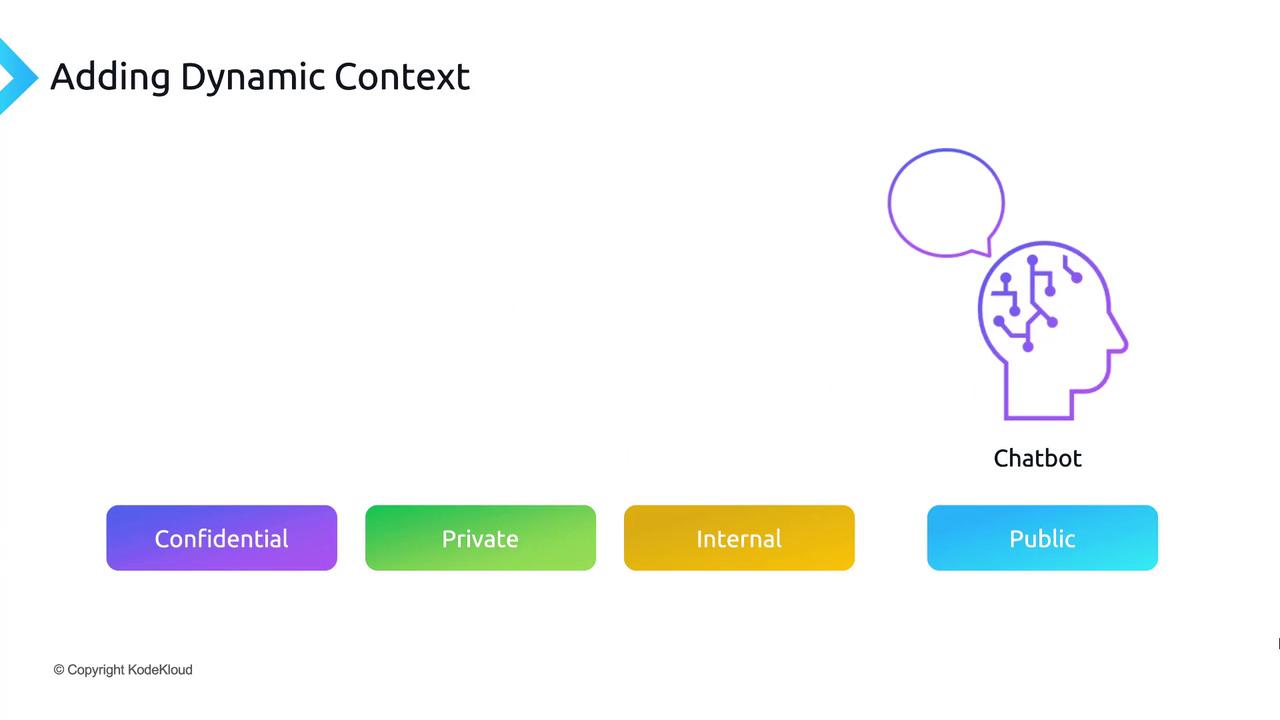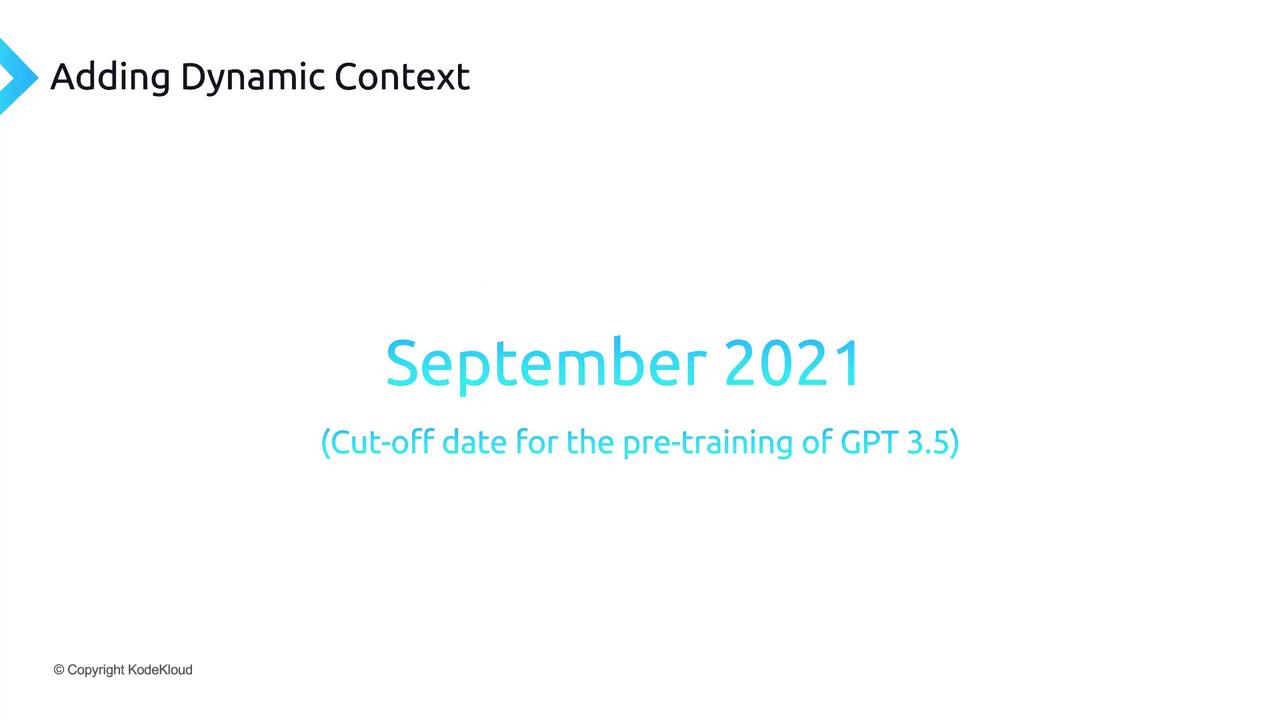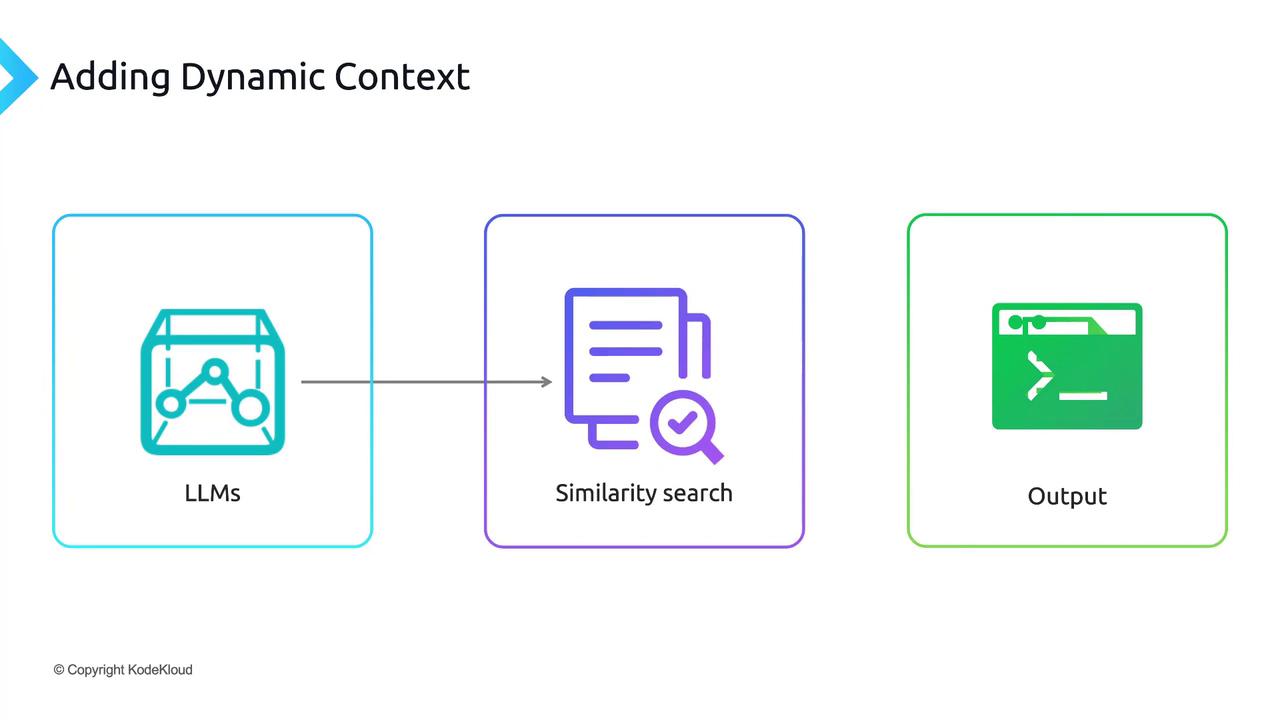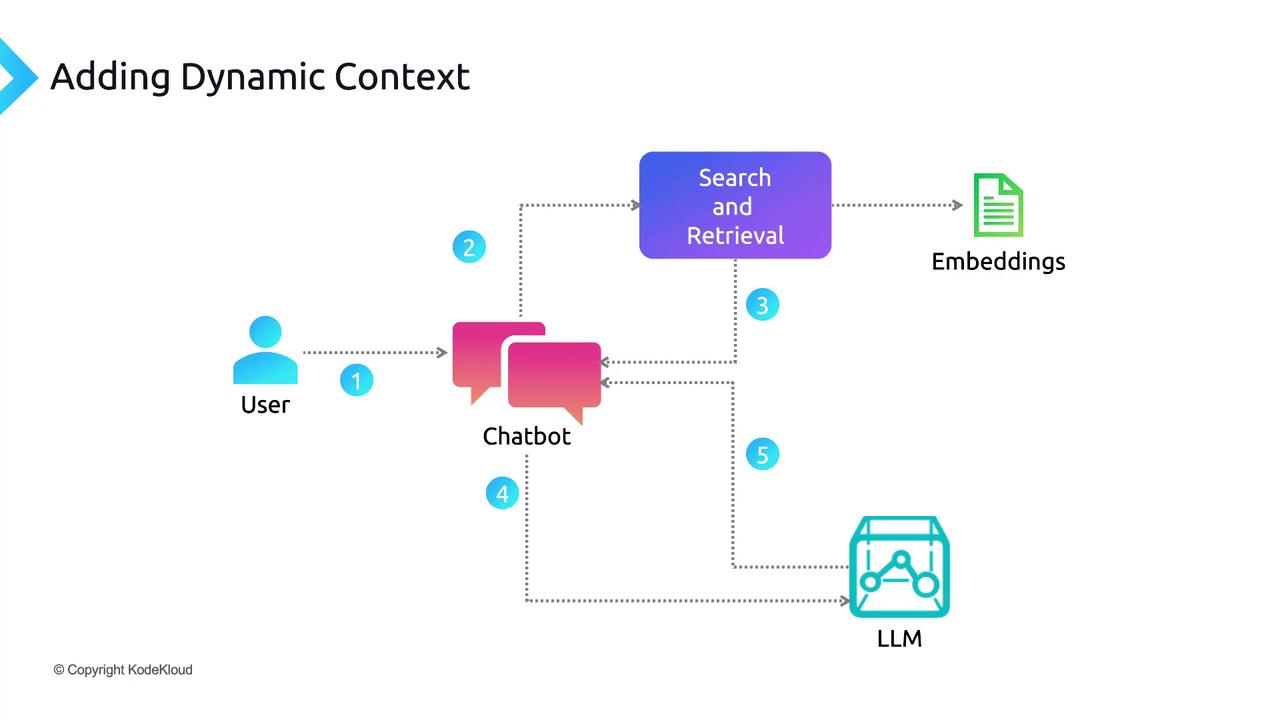Mastering Generative AI with OpenAI
Using Word Embeddings For Dynamic Context
Dynamic Context
In this lesson, we’ll explore how to enrich large language models (LLMs) with up-to-date information by injecting dynamic context from your own datasets—whether they’re confidential, private, internal, or public. This technique helps you build chatbots and applications that stay current beyond GPT-3.5’s September 2021 pre-training cutoff.

Why Dynamic Context Matters
Large language models are powerful, but their knowledge is frozen at the time of their last pre-training. To handle events, documents, or data generated after September 2021, you need a way to feed fresh information at query time.

Core Workflow: Indexing & Retrieval
Adding dynamic context involves two key phases:
| Phase | Purpose | Example Tools |
|---|---|---|
| Indexing | Convert documents into vector embeddings | OpenAI Embeddings, Hugging Face Embeddings |
| Retrieval | Find and return the most relevant passages | Pinecone, Weaviate, Elasticsearch |
1. Indexing
- Break each document, FAQ, or dataset entry into chunks.
- Generate a vector embedding for each chunk.
- Store embeddings in a vector database (often called a “vector store”).
2. Retrieval
- Compute the embedding for the user’s prompt.
- Perform a similarity search against your vector store.
- Retrieve the top-k most relevant passages.
Note
Adjust the value of k (top-k passages) based on token limits and response quality.

End-to-End Sequence
- User Query: A prompt is submitted through the chatbot UI.
- Embedding: The application computes an embedding for the prompt.
- Search: The vector store returns the most similar passages.
- Injection: Retrieved passages are prepended (or appended) to the original prompt.
- LLM Call: The augmented prompt is sent to the language model API.
- Generation: The model uses both pre-trained knowledge and dynamic context to craft a precise answer.
- Response: The chatbot displays the final output to the user.

Next Steps: Hands-On Demo
In the following section, we’ll implement a working prototype using the AskUs dataset, which contains events and information generated after GPT-3.5’s cutoff. You’ll see how dynamic context dramatically improves answer accuracy with real-world data. Ready to dive in?
Links and References
Watch Video
Watch video content